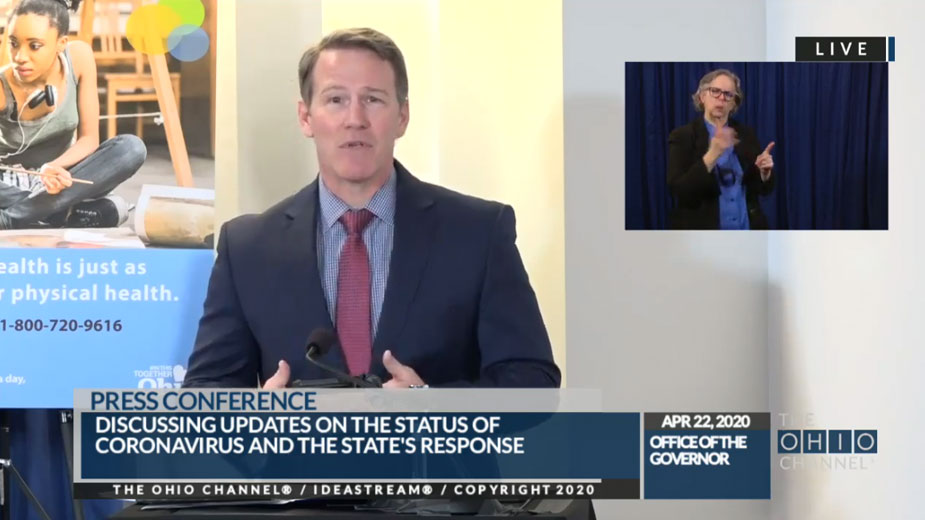Husted Outlines Economic Consequences of COVID-19
YOUNGSTOWN, Ohio — Before the coronavirus pandemic, Ohio’s economy was robust with 5.6 million people working, a record low unemployment rate and the biggest problem employers had was finding enough people to do the work they had, recalled Lt. Gov. Jon Husted.
“Boy how things have changed,” said Husted during the daily coronavirus briefing on Wednesday.
Since March 15, the state has lost about 1 million jobs, Husted said. Nationally, job loss is well over 20 million is projected “to grow much higher than that,” he said. It’s been projected that unemployment could grow to as high as 20%, well above the 10.9% where unemployment peaked during the Great Recession, he said.
Currently, many small businesses in the state are within days or weeks of running out of money, and many will close “not just for a while, but forever,” Husted said.
That impact local and state governments, because as business aren’t operating and people aren’t working, the governments aren’t collecting the tax revenues that fund certain services. During conversations with mayors throughout the state, Husted reported those cities may be forced to cut services, including fire and police, anywhere from 15% to 25%, he said. Those resources also fund education and health care in the state.
During a normal recession, the state’s $2.7 billion rainy day fund would suffice, Husted said. But based on current projections, “we might need twice that amount just to balance the budget over the next 15 months,” he said.
As the state prepares to slowly reopen parts of the economy on May 1, Husted reiterated the importance of doing so safely, saying that all businesses that reopen will be expected to abide by precautionary guidelines, including wearing masks, disinfecting surfaces and maintaining six feet of distance.
“The road to recovery will certainly be long and gradual,” Husted said. “But with the right precautions, business can create a safe environment for their employees and customers.”
Other impacts from past recessions are more health related than economic, Husted said. As unemployment increases, so do the rates of suicide, drug addiction, domestic violence, homelessness, depression and other health consequences like diabetes.
“Bad economic conditions lead to bad health consequences,” which tend to more directly affect those at the lower end of the scale, he said.
To address those issues, the Ohio Department of Mental Health and Addiction Services has launched a new Covid Care Line to provide free and confidential emotional support to Ohioans. The hotline is staffed by licensed clinicians from 8 a.m. to 8 p.m., after which callers are referred to a national hotline, explained the department’s director Lori Criss.
“This is an opportunity for the care line to provide emotional support and assistance to all Ohioans who are struggling with the stress of dealing with this pandemic,” Criss said.
Ohioans can call 1 800 720 9616 to access the care line. If callers need additional support, the consultants will connect them to other supports in their community, Criss said.
Kim Hall, director of the Ohio Department of Job and Family Services provided updated numbers on unemployment claims being processed by the stated.
As of April 21, the state has paid $858,499,009.06 to 349,176 individuals. To date, 401,214 claims have been allowed and are being paid right now or are preparing to be paid.
Hall reported there are 353,000 claims pending, 148,321 have been denied, and 3,910 have been withdrawn.
Copyright 2024 The Business Journal, Youngstown, Ohio.



